Categories
Archives

IPTC Managing Director Brendan Quinn presented at the European Broadcasting Union’s Data Technology Seminar last week.
The DataTech Seminar, known in previous years as the Metadata Developers Network, brought over 100 technologists together in person in Geneva to discuss topics related to managing data at broadcasters in Europe and around the world.
Brendan spoke on Tuesday 21st March on a panel discussing Artificial Intelligence and the Media. Brendan used the opportunity to discuss IPTC’s current work on “do not train” signals in metadata, and on establishing best practices for how AI tools can embed metadata indicating the origin of their media.
The work of C2PA, Project Origin and Content Authenticity Initiative on addressing content provenance and tamper-evident media was also highlighted by Brendan during the panel discussion, as this relates to the prevalence of “deepfake” content that can be created by generative AI engines.
On Wednesday 22nd March, Brendan spoke in lieu of Paul Kelly, lead of the IPTC Sports Content Working Group about the IPTC SportSchema project. The session was called “IPTC Sport Schema – the next generation of sports data.” An evolution of IPTC’s SportsML standard, IPTC Sport Schema brings our 20 years of experience in sports data markup to the world of Knowledge Graphs and the Semantic Web. The specification is coming close to a version 1, so we were very proud to present it to some of the world’s top broadcasters and industry players.
The IPTC SportSchema site sportschema.org now includes comprehensive documentation of the ontology behind sports data model, examples of how it can be queried using SPARQL, example data files and instance diagrams showing how it can be used to represent common sports such as athletics, soccer, golf and hockey.
We look forward to discussing IPTC Sport Schema much more over the coming months, as we draw close to its general release.
EBU members can watch the full presentation at the EBU.ch site.
Our friends at CEPIC are running a webinar in conjunction with Google on the Licensable badge in search results. The webinar is TODAY, February 21st, so there are still a few hours left to join.
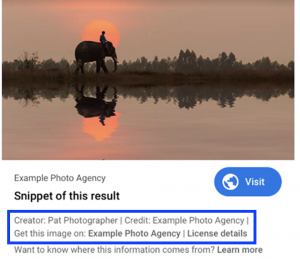
Register for free at https://www.eventbrite.com/e/google-webinar-image-seo-and-licensable-badge-tickets-532031278877
Google webinar: Image SEO and Licensable Badge
In this webinar, John Mueller, Google’s Search Advocate, will cover Image SEO Best Practices and Google’s Licensable Badge. For the Licensable Badge, John will give an overview of the product and implementation guidelines. There will also be time for a Q&A session.
One of the methods for enabling your licensing metadata to be surfaced in Google Search results is to embed the correct IPTC Photo Metadata directly into image files. The other is to use schema.org markup in the page hosting the image. We explain more in the Quick Guide to IPTC Photo Metadata on Google Images, but you can also learn about it by attending this webinar.
Tuesday 21st February 2023, at 4 PM – 5PM Central European Time
Topics covered include:
• Image SEO best practices
• Licensable badge in Google image search results
• Q&A
This is a free webinar open to all those interested, not just CEPIC or IPTC members.
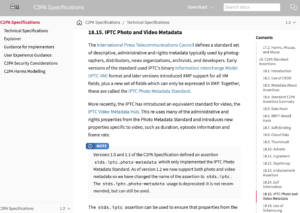
We are happy to announce that IPTC’s work with C2PA, the Coalition for Content Provenance and Authority, continues to bear fruit. The latest development is that C2PA assertions can now include properties from both the IPTC Photo Metadata Standard and our video metadata standard, IPTC Video Metadata Hub.
Version 1.2 of the C2PA Specification describes how metadata from either the photo or video standard can be added, using the XMP tag for each field in the JSON-LD markup for the assertion.
For IPTC Photo Metadata properties, the XMP tag name to be used is shown in the “XMP specs” row in the table describing each property in the Photo Metadata Standard specification. For Video Metadata Hub, the XMP tag can be found in the Video Metadata Hub properties table under the “XMP property” column.
We also show in the example assertion how the new accessibility properties can be added using the Alt Text (Accessibility) field which is available in Photo Metadata Standard and will soon be available in a new version of Video Metadata Hub.
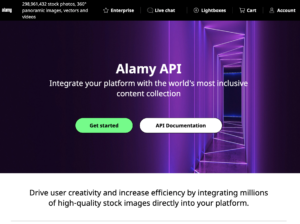 Alamy, a stock photo agency offering a collection of over 300 million images along with millions of videos, has recently launched a new Partnerships API, and has chosen IPTC’s ninjs 2.0 standard as the main format behind the API.
Alamy, a stock photo agency offering a collection of over 300 million images along with millions of videos, has recently launched a new Partnerships API, and has chosen IPTC’s ninjs 2.0 standard as the main format behind the API.
Alamy is an IPTC member via its parent company PA Media, and Alamy staff have contributed to the development of ninjs in recent years, leading to the introduction of ninjs 2.0 in 2021.
“When looking at a response format, we sought to adopt an industry standard which would aid in the communication of the structure of the responses but also ease integration with partners who may already be familiar with the standard,” said Ian Young, Solutions Architect at Alamy.
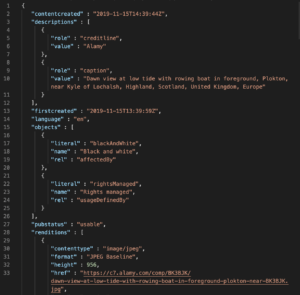
“With this in mind, we chose IPTCs news in JSON format, ninjs,” he said. “We selected version 2 specifically due to its structural improvements over version 1 as well as its support for rights expressions.”
Young continued: “ninjs allows us to convey the metadata for our content, links to the media itself and the various supporting renditions as well as conveying machine readable rights in a concise payload.”
“We’ve integrated with customers who are both familiar with IPTC standards and those who are not, and each have found the API equally easy to work with.”
Learn more about ninjs via IPTC’s ninjs overview pages, consult the ninjs User Guide, or try it out yourself using the ninjs generator tool.
Family Tree magazine has published a guide on using embedded metadata for photographs in genealogy – the study of family history.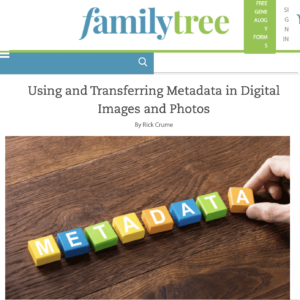
Rick Crume, a genealogy consultant and the article’s author, says IPTC metadata “can be extremely useful for savvy archivists […] IPTC standards can help future-proof your metadata. That data becomes part of the digital photo, contained inside the file and preserved for future software programs.”
Crume quotes Ken Watson from All About Digital Photos saying “[IPTC] is an internationally recognized standard, so your IPTC/XMP data will be viewable by someone 50 or 100 years from now. The same cannot be said for programs that use some proprietary labelling schemes.”
Crume then adds: “To put it another way: If you use photo software that abides by the IPTC/XMP standard, your labels and descriptive tags (keywords) should be readable by other programs that also follow the standard. For a list of photo software that supports IPTC Photo Metadata, visit the IPTC’s website.“
“[IPTC] is an internationally recognized standard, so your IPTC/XMP data will be viewable by someone 50 or 100 years from now”
The article goes on to recommend particular software choices based on IPTC’s list of photo software that supports IPTC Photo Metadata. In particular, Crume recommends that users don’t switch from Picasa to Google Photos, because Google Photos does not support IPTC Photo Metadata in the same way. Instead, he recommends that users stick with Picasa for as long as possible, and then choose another photo management tool from the supported software list.
Similarly, Crume recommends that users should not move from Windows Photo Gallery to the Windows 10 Photos app, because the Photos app does not support IPTC embedded metadata.
Crume then goes on to investigate popular genealogy sites to examine their support for embedded metadata, something that we do not cover in our photo metadata support surveys.
The full article can be found on FamilyTree.com.

The IPTC took part in a panel on Diversity and Inclusion at the CEPIC Congress 2022, the picture industry’s annual get-together, held this year in Mallorca Spain.
Google’s Anna Dickson hosted the panel, which also included Debbie Grossman of Adobe Stock, Christina Vaughan of ImageSource and Cultura, and photographer Ayo Banton.
Unfortunately Abhi Chaudhuri of Google couldn’t attend due to Covid, but Anna presented his material on Google’s new work surfacing skin tone in Google image search results.
Brendan Quinn, IPTC Managing Director participated on behalf of the IPTC Photo Metadata Working Group, who put together the Photo Metadata Standard including the new properties covering accessibility for visually impaired people: Alt Text (Accessibility) and Extended Description (Accessibility).
Brendan also discussed IPTC’s other Photo Metadata properties concerning diversity, including the Additional Model Information which can include material on “ethnicity and other facets of the model(s) in a model-released image”, and the characteristics sub-property of the Person Shown in the Image with Details property which can be used to enter “a property or trait of the person by selecting a term from a Controlled Vocabulary.”
Some interesting conversations ensued around the difficulty of keeping diversity information up to date in an ever-changing world of diversity language, the pros and cons of using controlled vocabularies (pre-selected word lists) to cover diversity information, and the differences in covering identity and diversity information on a self-reported basis versus reporting by the photographer, photo agency or customer.
It’s a fascinating area and we hope to be able to support the photographic industry’s push forward with concrete work that can be implemented at all types of photographic organisations to make the benefits of photography accessible for as many people as possible, regardless of their cultural, racial, sexual or disability identity.

The National Association of Broadcasters (NAB) Show wrapped up its first face-to-face event in three years last week in Las Vegas. In spite of the name, this is an internationally attended trade conference and exhibition showcasing equipment, software and services for film and video production, management and distribution. There were 52,000 attendees, down from a typical 90-100k, with some reduction in booth density; overall the show was reminiscent of pre-COVID days. A few members of IPTC met while there: Mark Milstein (vAIsual), Alison Sullivan (MGM Resorts), Phil Avner (Associated Press) and Pam Fisher (The Media Institute). Kudos to Phil for working, showcasing ENPS on the AP stand, while others walked the exhibition stands.
NAB is a long-running event and several large vendors have large ‘anchor’ booths. Some such as Panasonic and Adobe reduced their normal NAB booth size, while Blackmagic had their normal ‘city block’-sized presence, teeming with traffic. In some ways the reduced booth density was ideal for visitors: plenty of tables and chairs populated the open areas making more meeting and refreshment space available. The NAB exhibition is substantially more widely attended than the conference, and this year several theatres were provided on the show floor for sessions any ‘exhibits only’ attendee could watch. Some content is now available here: https://nabshow.com/2022/videos-on-demand/
For the most part this was a show of ‘consolidation’ rather than ‘innovation’. For example, exhibitors were enjoying welcoming their partners and customers face-to-face rather than launching significant new products. Codecs standardised during the past several years were finally reaching mainstream support, with AV1, VP9 and HEVC well-represented across vendors. SVT-AV1 (Scalable Vector Technology) was particularly prevalent, having been well optimised and made available to use license-free by the standard’s contributors. VVC (Versatile Video Coding), a more recent and more advanced standard, is still too computationally intensive for commercial use, though a small set made mention of it on their stands (e.g. Fraunhofer).
IP is now fairly ubiquitous within broadcast ecosystems. To consolidate further, an IP Showcase booth illustrating support across standards bodies and professional organisations championed more sophisticated adoption. A pyramid graphic showing a cascade of ‘widely available’ to ‘rarely available’ sub-systems encouraged deeper adoption.
Super Resolution – raising the game for video upscaling
One of the show floor sessions – “Improving Video Quality with AI” – presented advances by iSIZE and Intel. The Intel technology may be particularly interesting to IPTC members, and concerns “Super Resolution.” Having followed the subject for over 20 years, for me this was a personal highlight of the show.
Super Resolution is a technique for creating higher resolution content from smaller originals. For example, achieving a professional quality 1080p video from a 480p source, or scaling up a social media-sized image for feature use.
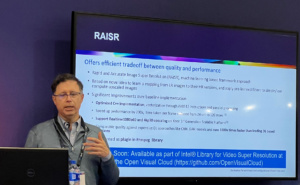
A few years ago a novel and highly effective new Super Resolution method was innovated (“RAISR”, see https://arxiv.org/abs/1606.01299); this represented a major discontinuity in the field, albeit with the usual mountain of investment and work needed to take the ‘R’ (research) to ‘D’ (development).
This is exactly what Intel have done, and the resulting toolsets will be made available at no cost at the company’s Open Visual Cloud repository at the end of May.
Intel invested four years in improving the AI/ML algorithms (having created a massive ground truth library for learning), optimising to CPUs for performance and parallelisation, and then engineering the ‘applied’ tools developers need for integration (e.g. Docker containers, FFmpeg and GStreamer plug-ins). Performance will now be commercially robust.
The visual results are astonishing, and could have a major impact on the commercial potential of photographic and film/video collections needing to reach much higher resolutions or even to repair ‘blurriness’.
Next year’s event is the centennial of the first NAB Show and takes place from April 15th-19th in Las Vegas.
– Pam Fisher – Lead, IPTC Video Metadata Working Group
IPTC members will be appearing at imaging.org’s Imaging Science and Technology DigiTIPS 2022 meeting series tomorrow, April 26.
The session description is as follows:
Unmuting Your ‘Silent Images’ with Photo Metadata
Caroline Desrosiers, founder and CEO, Scribely
David Riecks and Michael Steidl, IPTC Photo Metadata Working GroupAbstract: Learn how embedded photo metadata can aid in a data-driven workflow from capture to publish. Discover what details exist in your images; and learn how you can affix additional information so that you and others can manage your collection of images. See how you can embed info to automatically fill in “Alt Text” to images shown on your website. Explore how you can test your metadata workflow to maximize interoperability.”
Registration is still open. You can register at https://www.imaging.org/Site/IST/Conferences/DigiTIPS/DigiTIPS_Home.aspx?Entry_CCO=3#Entry_CCO

A hot topic in media circles these days is “synthetic media”. That is, media that was created either partly or fully by a computer. Usually the term is used to describe content created either partly or wholly by AI algorithms.
IPTC’s Video Metadata Working Group has been looking at the topic recently and we concluded that it would be useful to have a way to describe exactly what type of content a particular media item is. Is it a raw, unmodified photograph, video or audio recording? Is it a collage of existing photos, or a mix of synthetic and captured content? Was it created using software trained on a set of sample images or videos, or is it purely created by an algorithm?
We have an existing vocabulary that suits some of this need: Digital Source Type. This vocabulary was originally created to be able to describe the way in which an image was scanned into a computer, but it also represented software-created images at a high level. So we set about expanding and modifying that vocabulary to cover more detail and more specific use cases.
It is important to note that we are only describing the way a media object has been created: we are not making any statements about the intent of the user (or the machine) in creating the content. So we deliberately don’t have a term “deepfake”, but we do have “trainedAlgorithmicMedia” which would be the term used to describe a piece of content that was created by an AI algorithm such as a Generative Adversarial Network (GAN).
Here are the terms we propose to include in the new version of the Digital Source Type vocabulary. (New terms and definition changes are marked in bold text. Existing terms are included in the list for clarity.)
| Term ID | digitalCapture |
| Term name | Original digital capture sampled from real life |
| Term description | The digital media is captured from a real-life source using a digital camera or digital recording device |
| Examples | Digital photo or video taken using a digital SLR or smartphone camera |
| Term ID | negativeFilm |
| Term name | Digitised from a negative on film |
| Term description | The digital media was digitised from a negative on film on any other transparent medium |
| Examples | Film scanned from a moving image negative |
| Term ID | positiveFilm |
| Term name | Digitised from a positive on film |
| Term description | The digital media was digitised from a positive on a transparency or any other transparent medium |
| Examples | Digital photo scanned from a photographic positive |
| Term ID | |
| Term name | Digitised from a print on non-transparent medium |
| Term description | The digital image was digitised from an image printed on a non-transparent medium |
| Examples | Digital photo scanned from a photographic print |
| Term ID | humanEdited |
| Term name | Original media with minor human edits |
| Term description | Minor augmentation or correction by a human, such as a digitally-retouched photo used in a magazine |
| Examples | Video camera recording, manipulated digitally by a human editor |
| Term ID | compositeCapture |
| Term name | Composite of captured elements |
| Term description | Mix or composite of several elements that are all captures of real life |
| Examples | * A composite image created by a digital artist in Photoshop based on several source images * Edited sequence or composite of video shots |
| Term ID | algorithmicallyEnhanced |
| Term name | Algorithmically-enhanced media |
| Term description | Minor augmentation or correction by algorithm |
| Examples | A photo that has been digitally enhanced using a mechanism such as Google Photos’ “de-noise” feature |
| Term ID | dataDrivenMedia |
| Term name | Data-driven media |
| Term description | Digital media representation of data via human programming or creativity |
| Examples | A representation of a distant galaxy created by analysing the outputs of a deep-space telescope (as opposed to a regular camera) An infographic created using a computer drawing tool such as Adobe Illustrator or AutoCAD |
| Term ID | digitalArt |
| Term name | Digital art |
| Term description | Media created by a human using digital tools |
| Examples | * A cartoon drawn by an artist into a digital tool using a digital pencil, a tablet and a drawing package such as Procreate or Affinity Designer * A scene from a film/movie created using Computer Graphic Imagery (CGI) * Electronic music composition using purely synthesised sounds |
| Term ID | virtualRecording |
| Term name | Virtual recording |
| Term description | Live recording of virtual event based on synthetic and optionally captured elements |
| Examples | * A recording of a computer-generated sequence, e.g. from a video game * A recording of a Zoom meeting |
| Term ID | compositeSynthetic |
| Term name | Composite including synthetic elements |
| Term description | Mix or composite of several elements, at least one of which is synthetic |
| Examples | * Movie production using a combination of live-action and CGI content, e.g. using Unreal engine to generate backgrounds * A capture of an augmented reality interaction with computer imagery superimposed on a camera video, e.g. someone playing Pokemon Go |
| Term ID | trainedAlgorithmicMedia |
| Term name | Trained algorithmic media |
| Term description | Digital media created algorithmically using a model derived from sampled content |
| Examples | * Image based on deep learning from a series of reference examples * A “speech-to-speech” generated audio or “deepfake” video using a combination of a real actor and an AI model * “Text-to-image” using a text input to feed an algorithm that creates a synthetic image |
| Term ID | algorithmicMedia |
| Term name | Algorithmic media |
| Term description | Media created purely by an algorithm not based on any sampled training data, e.g. an image created by software using a mathematical formula |
| Examples | * A purely computer-generated image such as a pattern of pixels generated mathematically e.g. a Mandelbrot set or fractal diagram * A purely computer-generated moving image such as a pattern of pixels generated mathematically |
We propose that the following term, which exists in the current DigitalSourceType CV, be retired:
| Term ID | RETIRE: softwareImage |
| Term name | Created by software |
| Term description | The digital image was created by computer software |
| Note | We propose that trainedAlgorithmicMedia or algorithmnicMedia be used instead of this term. |
We welcome all feedback from across the industry to these proposed terms.
Please contact Brendan Quinn, IPTC Managing Director at mdirector@iptc.org use the IPTC Contact Us form to send your feedback.
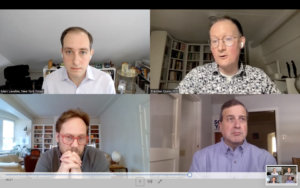
The IPTC has an ongoing project to the news and media industry deal with content credibility and provenance. As part of this, we have started working with Project Origin, a consortium of news and technology organisations who have come together to fight misinformation through the use of content provenance technologies.
On Tuesday 22nd February, Managing Director of IPTC Brendan Quinn spoke on a panel at an invite-only Executive Briefing event attended by leaders from news organisations around the world.
Other speakers at the event included Marc Lavallee, Head of R&D for The New York Times, Pascale Doucet of France Télévision, Eric Horvitz of Microsoft Research, Andy Parsons of Adobe, and Laura Ellis, Jamie Angus and Jatin Aythora of the BBC.
The event marks the beginning of the next phase of the industry’s work on content credibility. C2PA has now delivered the 1.0 version of its spec, so the next phase of the work is for the news industry to get together to create best practices around implementing it in news workflows.
IPTC and Project Origin will be working together with stakeholders from all parts of the news industry to establish guidelines for making provenance work in a practical way across the entire news ecosystem.